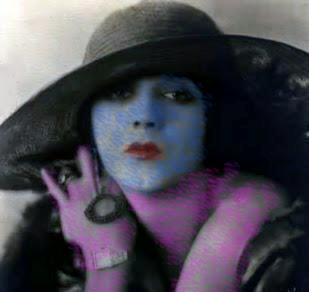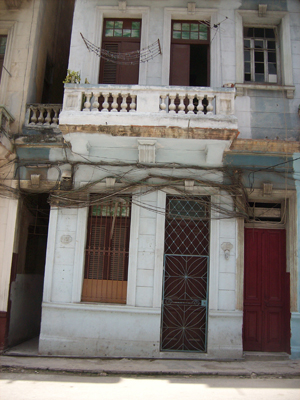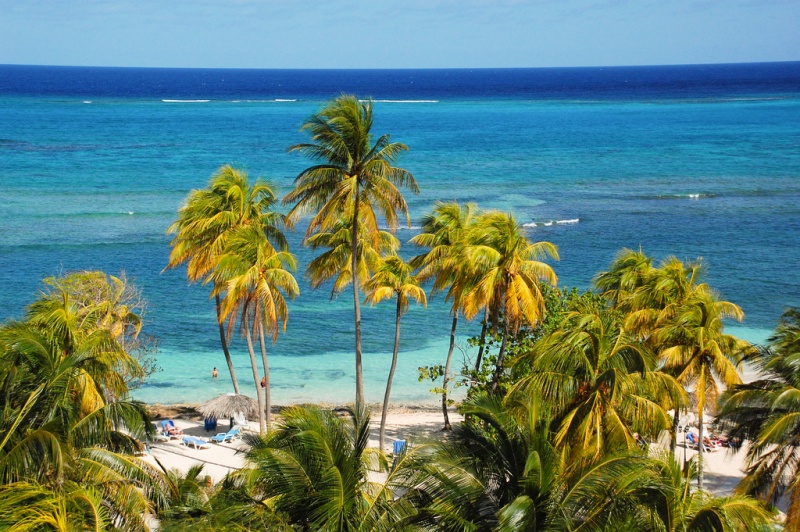“The Macorina” and her picaresca Guaracha..Ponme your hand here!..
Havana of the first decades of the twentieth century, the Prado’s Anon and straw hat had, as a legitimate pride, as Don of progress, no less than the first female chauffeur of America. This is not much, but it is quite. María Calvo Nodarse, received the title of driver in 1917. Her first car was given to her by a wealthy businessman, in compensation for having run over with her vehicle.
María Calvo Nodarse, Macorina, was born in 1892 in the town of Guanajay, then belonging to the province of Pinar del Río.
Of her, says his neighbor Mercedes: “It helped a lot to the people of the block, never said that it was rich, but more or less one captured, it was a happy woman and it operated a Pontiac and a Cadillac”.
Her taste for automobiles, besides being a woman full of attractions, identified Macorina, who arrived in Havana “with a man who promised to love me forever, that it was my first and only love, and that I will remember until my death,” Event occurred on June 15, 1977.
Rogelio Carnero Perez as a teenager jumped from rooftop to roof to watch the spectacular woman’s movements in his house of Prince 155, between San Francisco and Espada, in Centro Habana, one of the many houses of appointment of the muse of the Cuban painter Cundo Bermúdez .
Carnero Perez recalls: “Macorina arrived at that address in 1943, adding that property to others she already had, and when she looked out, the very old people asked her for a peso, which she gladly gave them.
“She was very pretty, the agency owners gave her cars. Every year she would park a ‘new package’ car here. The banker and representative to the camera, Amadeo Barletta, gave him a convertible car of the year 55, nine, of the same type that he gave the Queen of Carnival.
When asked about the sad, dark and lonely end of Macorina, which some authors mention, among them Miguel Ojeda Vila, Carnero Perez replied: “I did not see that she died poor, or any of that, because she had many houses and a son who She had machines that she provided when they gave her a new one. That was commonplace.
“Yes, I remember when they guarded her at Belascoain and Zanja’s funeral home, I was there and it was well attended and there were many wreaths.”
Https://youtu.be/P8u0lCHoFXM
Honors, perhaps of those she offered her favors, or those who knew her beauty, or knew her as the first Cuban who drove a car on the island and obtained the first driving license delivered by the municipality of Havana, Skill that Macorina marked, according to the testimony of Rogelio Carnero: “As I left Principe Street until the road to Infanta, instead of stopping to the left, it was stuck to the sidewalk and people ran to see it through the window.”
Your accent, soft and sweet, / mocking you in the morning / all your song throws. / Cocuyos made song, / your eyes of fever; / Your blood, notes of a son; / Your mouth, a blessing / of ripe soursop; / Your breasts, flesh of anon, / and it was your thin waist / the same of that danzón! / Cane and peanut: “Put your hand here, Macorina.”
Fragments of the poem Macorina that musicalizara the Mexican Chavela Vargas and that were amplified in the refrain that popularized Barroso with the Orchestra Sensation, in the second half of years 50 of century XX.
Give me your hand here Macorina / I’m dying Macorina / Give me my hand here Macorina / Give me your hand here Macorina / Give me your hand here Macorina /
Only a being as described by Chavela Vargas: “An exceptional woman … a mulatto daughter of black and Chinese; A female specimen that I have only seen in Cuba: Macorina had an exact skin color on the tobacco leaf. His eyes were green and he had straight hair that came to his waist. All who knew her, we could never forget “, could be the diva of not a few mortals, like the then bearded Rogelio Carnero Perez who, at 87, remembers shouting,” Rogelio I’m going to tell your mom “When the young man tried to see her, helping himself with a mirror, from the roof of the house on Prince Street, number 155.
52 years after the death of Macorina, one of the characters who also make the story of this Marvelous City, Mercedes Chacón, who knew her when she lived in the palace house of San Miguel 561 between Belascoaín and Gervasio wishes her: “A lot of light for Macorina … Because it was complete. ”
Agencies / R.Coco / Loyal Moral Chalice / Internet Photos / Arnoldo Varona / TheCubanHistory.com
THE CUBAN HISTORY, HOLLYWOOD.
FOLLOW US ON TWITTER AND FACEBOOK. THECUBANHISTORY.COM

“LA MACORINA” Y SU PICARESCA GUARACHA..PONME LA MANO AQUÍ! ..
La Habana de las primeras décadas del siglo XX, la del Anón del Prado y el sombrero de pajilla tenía, como legítimo orgullo, como Don de progreso, nada menos que a la primera mujer chofer de América. Esto no es mucho, pero es bastante. María Calvo Nodarse, recibió el título de chofer en el año 1917. Su primer automóvil le fue obsequiado por un acaudalado hombre de negocios, en compensación por haberla atropellado con su vehículo.
María Calvo Nodarse, Macorina, nació en el año 1892 en el poblado de Guanajay, entonces perteneciente a la provincia de Pinar del Río.
De ella, asevera su vecina Mercedes: “Ayudaba mucho a la gente de la cuadra, nunca dijo que era rica, pero más o menos uno lo captada, era una mujer alegre y manejaba un Pontiac y un Cadillac”.
Su gusto por los automóviles, además de ser una mujer llena de atractivos, identificaba a Macorina, quien llegó a La Habana “con un hombre que prometió amarme por siempre, que fue mi primer y único amor, y que recordaré hasta mi muerte”, suceso acaecido el 15 de junio de 1977.
Rogelio Carnero Pérez de adolescente saltaba de azotea en azotea para observar los movimientos de la espectacular mujer en su vivienda de Príncipe 155, entre San Francisco y Espada, en Centro Habana, una de las tantas casas de cita de la musa del pintor cubano Cundo Bermúdez.
Carnero Pérez rememora: “Macorina llegó a ese domicilio en el año 1943, sumando esa propiedad a otras que ya tenía, y cuando ella se asomaba las personas muy mayores le pedían un peso, que ella les entregaba gustosamente.
“Era muy bonita, los dueños de agencias le regalaban los automóviles. Cada año ella parqueaba aquí un carro ‘nuevo de paquete’. El banquero y representante a la cámara, Amadeo Barletta, le regaló un carro convertible del año 55, nuevecito, del mismo tipo que le regalaba a la Reina del Carnaval”.
Al preguntarle sobre el final triste, oscuro y solitario de Macorina, que refieren algunos autores, entre ellos Miguel Ojeda Vila, Carnero Pérez respondió: “Yo no vi que muriera pobre, ni nada de eso, porque ella tenía bastantes casas y un hijo que tenía maquinas que ella le proveía cuando le obsequiaban una nueva. Eso era lo más corriente.
“Sí recuerdo que cuando la velaron en la funeraria de Belascoain y Zanja, yo estuve ahí y aquello estaba bien concurrido y había muchas coronas de flores”.
https://youtu.be/P8u0lCHoFXM
Honores, tal vez de aquellos a los que brindó sus favores, o de quienes conocían su hermosura, o la conocían como la primera cubana que manejó un automóvil en la isla y obtuvo la primera licencia de conducción entregada por el municipio de La Habana; habilidad que Macorina marcaba, de acuerdo al testimonio de Rogelio Carnero: “Al salir por la calle Príncipe hasta la calzada de Infanta, en vez de parar por la izquierda, se pegaba a la acera y las personas corrían para verla por la ventanilla”.
Tu acento, suave y dulzón, / sinsonte que en la mañana / todo su canto desgrana. / Cocuyos hechos canción, / tus ojos de calentura; / tu sangre, notas de un son; / tu boca, una bendición / de guanábana madura; /tus senos, carne de anón, / ¡y era tu fina cintura / la misma de aquel danzón! / Vaho de caña y maní: “Pon, ponme la mano aquí, Macorina”.
Fragmentos del poema Macorina que musicalizara la mexicana Chavela Vargas y que fueron amplificados en el estribillo que popularizada Barroso con la Orquesta Sensación, en la segunda mitad de los años 50 del siglo XX.
Ponme la mano aquí Macorina / que me muero Macorina / Ponme la mano aquí Macorina / que me duele Macorina / Ponme la mano aquí Macorina / que estoy loco Macorina / Ponme la mano aquí Macorina / ponme la mano aquí.
Solo un ser como la describió Chavela Vargas: “Una mujer excepcional… una mulata hija de negra y chino; un ejemplar femenino que solamente lo he visto en Cuba: Macorina tenía un color de piel exacto a la hoja del tabaco. Sus ojos eran verdes y tenía cabellos lacios que le llegaban a la cintura. Todos los que la conocimos no la hemos podido olvidar jamás”, pudo ser la diva de no pocos mortales, como el entonces imberbe Rogelio Carnero Pérez quien, cumplidos los 87 años, la recuerda gritándole: “Rogelio se lo voy a decir a tu mamá”, cuando el joven trataba de verla, ayudándose de un espejito, desde la azotea de la casa de la calle Príncipe, número 155.
A 52 años del fallecimiento de Macorina, uno de los personajes que también hacen la historia de esta Ciudad Maravilla, Mercedes Chacón, quien la conoció cuando habitaba la casa palaciega de San Miguel 561 entre Belascoaín y Gervasio le desea: “Mucha luz para Macorina… porque era completa”.
Agencies/R.Coco/Cáliz Moré Leal/InternetPhotos/Arnoldo Varona/TheCubanHistory.com
THE CUBAN HISTORY, HOLLYWOOD.






